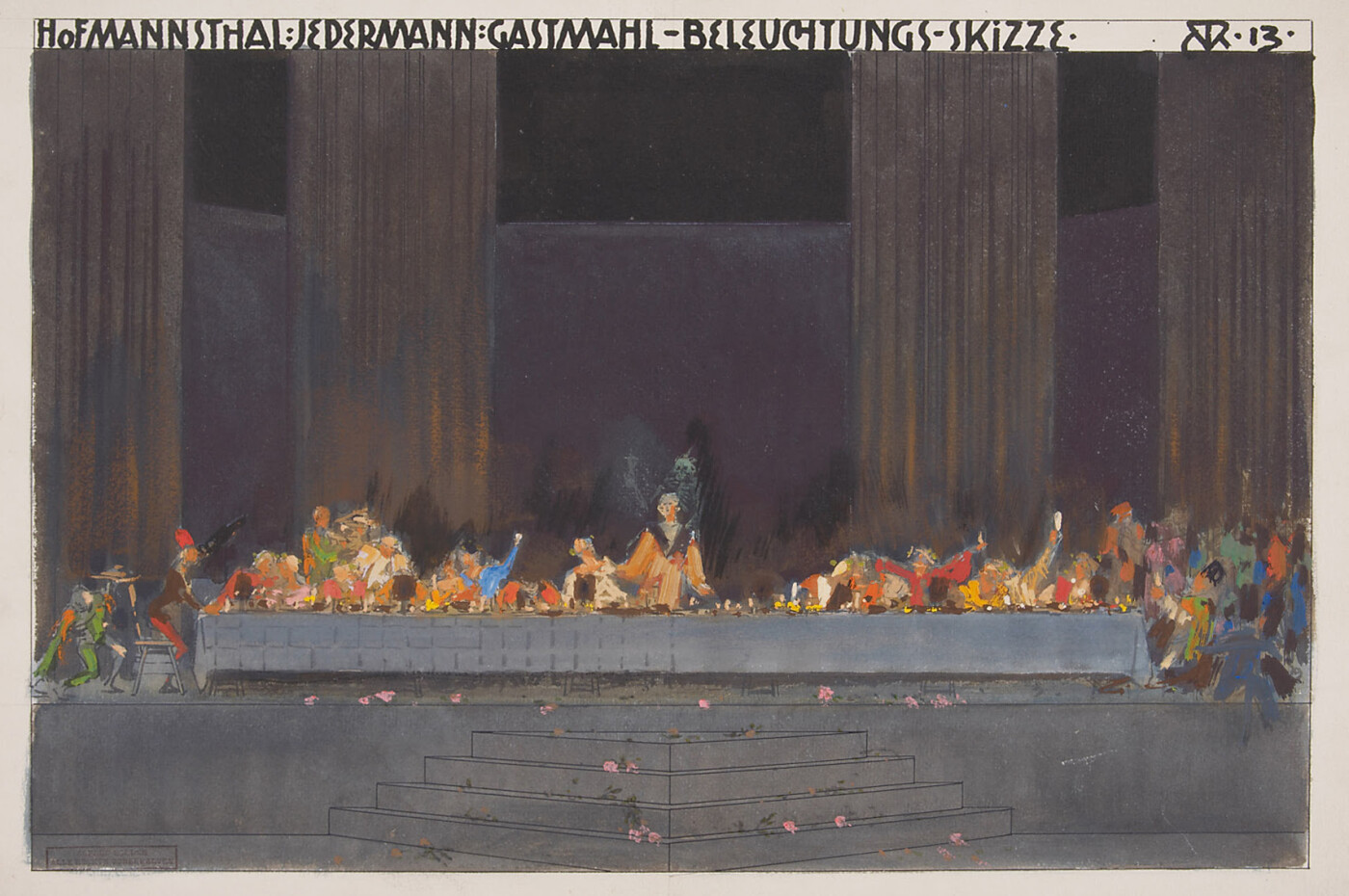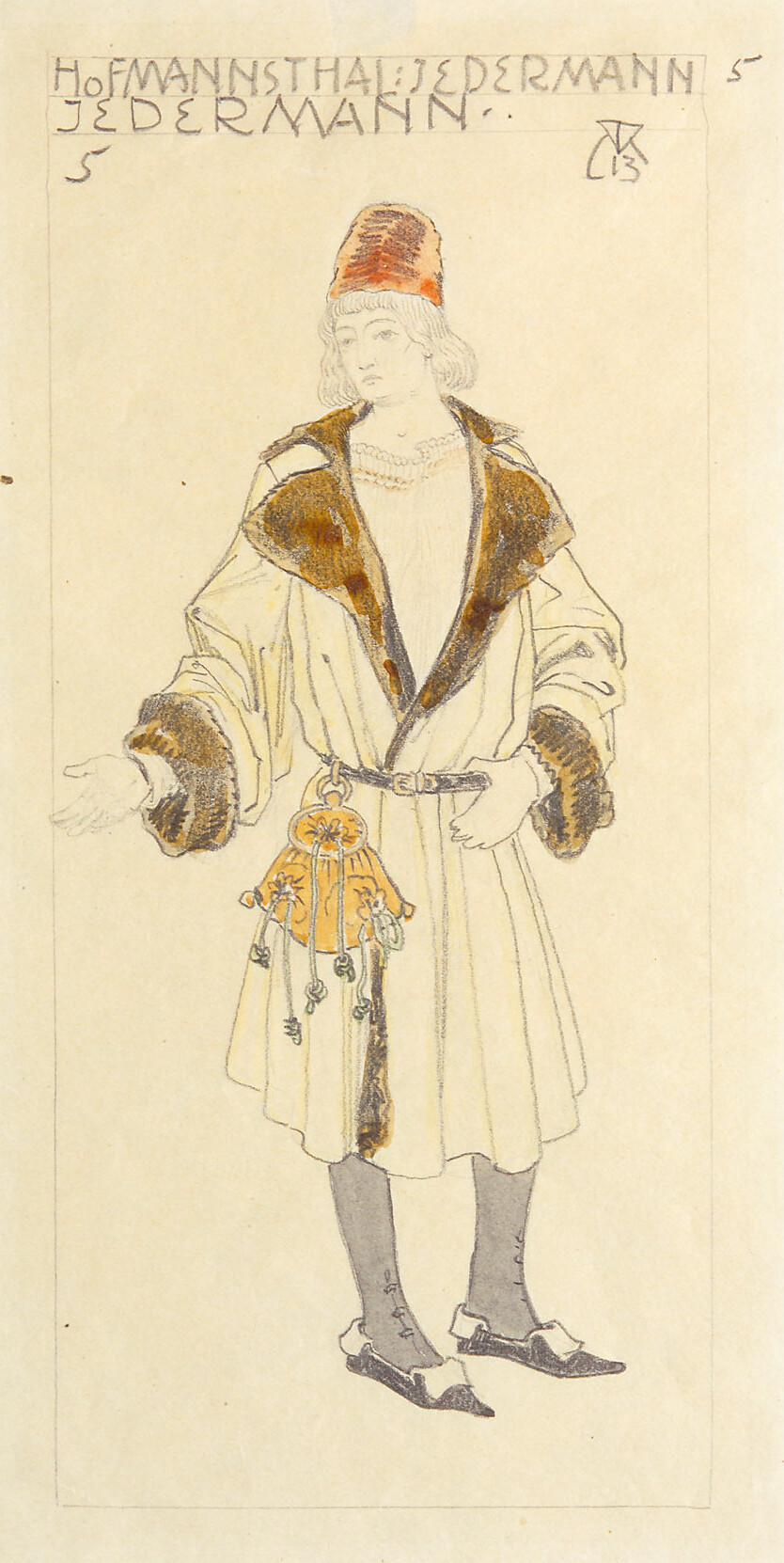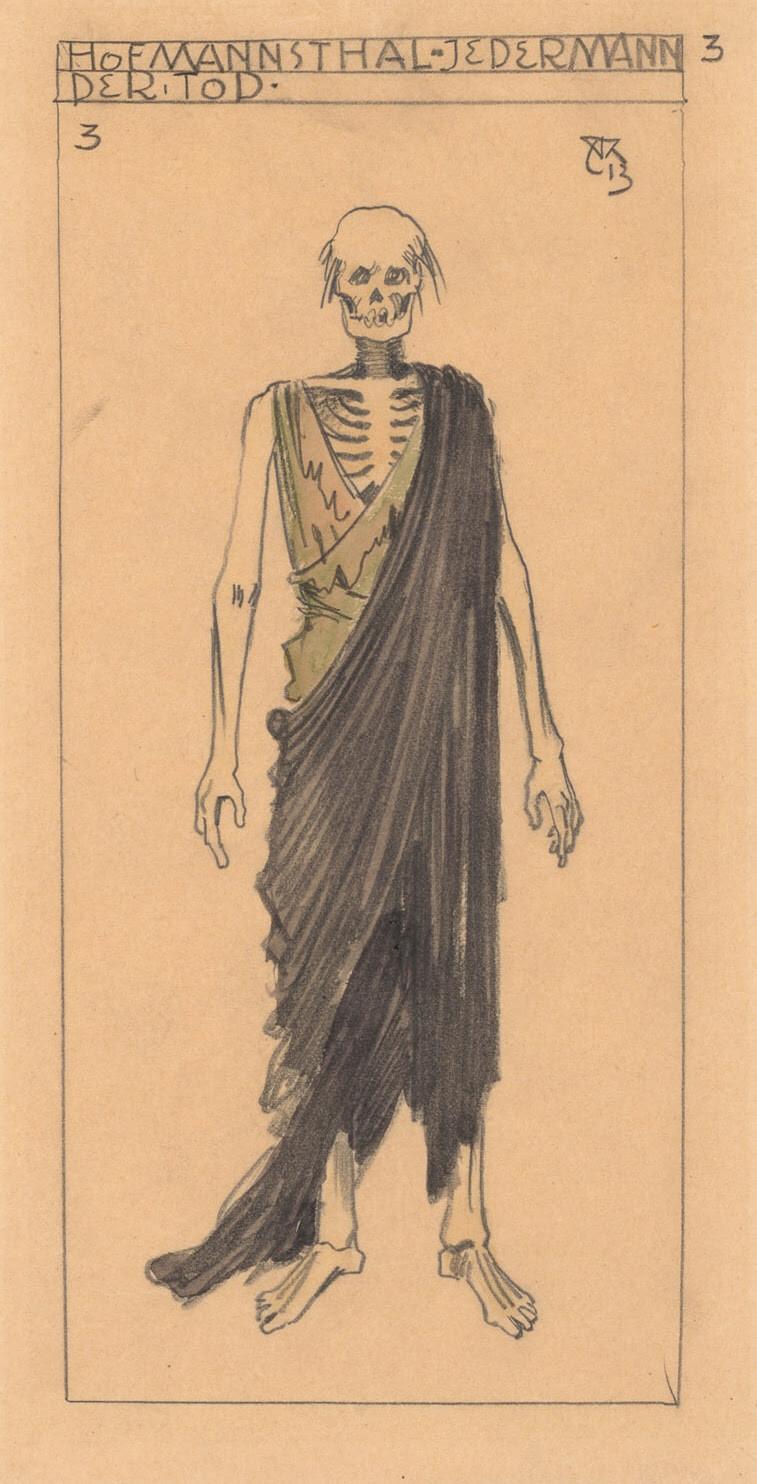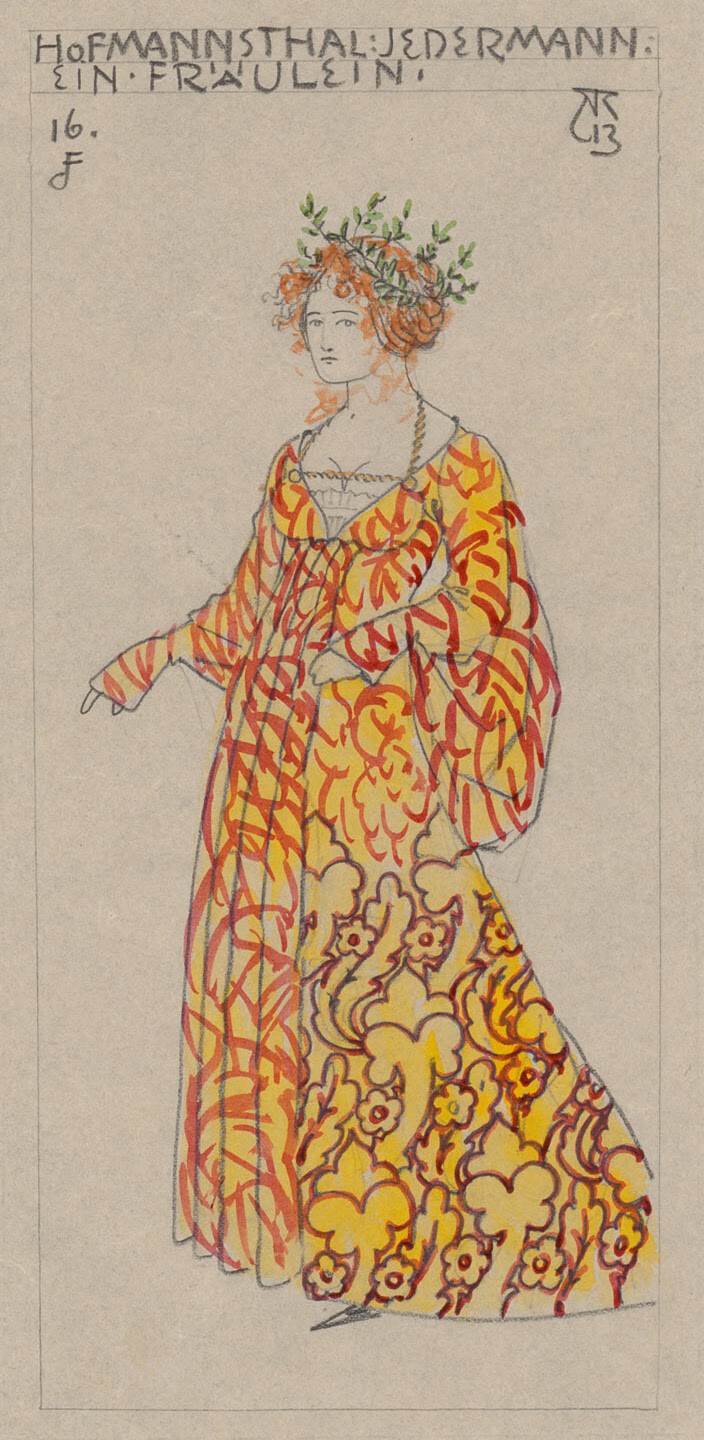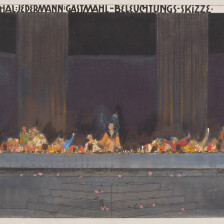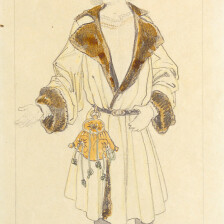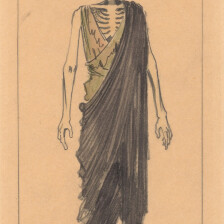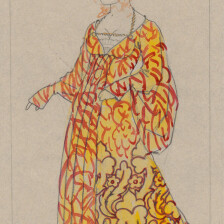Alfred Roller
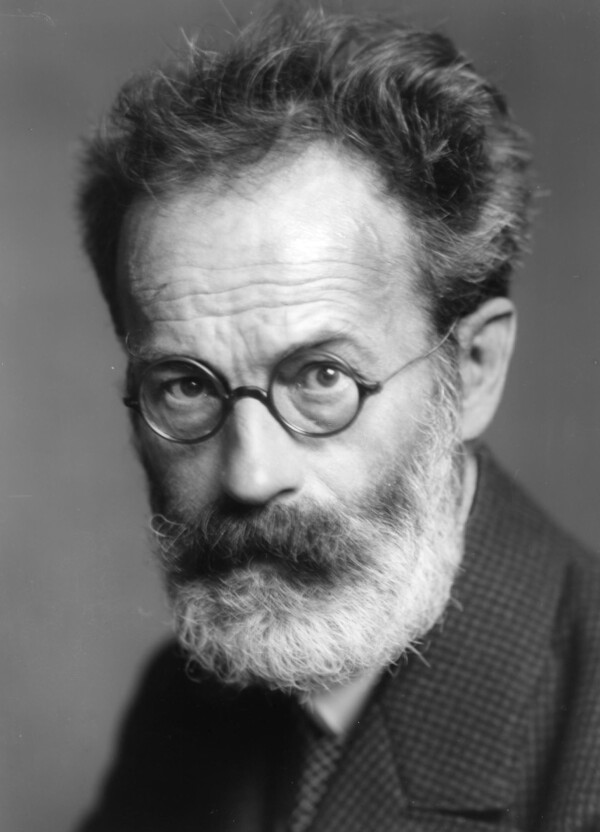
Alfred Roller photographed by Madame d'Ora, 1920, Austrian National Library, Vienna
© Picture Archives and Graphics Department, Austrian National Library
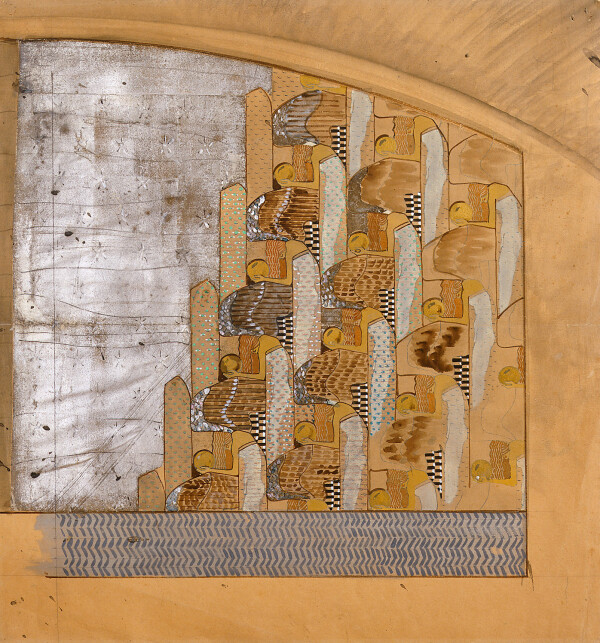
Alfred Roller: Study for "The Sinking Night", design for the wall decoration for the XIV Secession Exhibition (Klinger-Beethoven), 1902, Theatermuseum, Vienna
© KHM-Museumsverband
A painter, graphic artist, art teacher, and stage designer, Alfred Roller became a central figure of his age. He was a co-founder of the Vienna Secession in 1897, became its president in 1902, and held the position of editor of Ver Sacrum. As a stage designer, he worked closely with Gustav Mahler, Max Reinhardt, Hugo von Hofmannsthal, and Johann Strauss.
In his artistic ambitions, Alfred Roller, born in Brno on 2 October 1864, followed in the footsteps of his father Josef, who was a painter, etcher, and writer. His mother was Charlotte Lauer.
Roller began his education at the University of Vienna in 1883/84, where he studied law and was a guest student of art history. During this time, he already attended lectures at the Vienna Academy of Fine Arts and was then able to switch in 1884 without taking an entrance examination due to his good performance. There he studied under Eduard Peithner von Lichtenfels and Christian Griepenkerl.
Roller was a co-founder of the Association of Austrian Artists Secession, initially acting as secretary and subsequently appointed president in 1902. As a member of the Secession, Roller played a major role in organizing important exhibitions and in editing and designing the association’s periodical Ver Sacrum. His printed matter for exhibitions in particular, especially his modern posters, earned him a reputation as a respected graphic artist.
From 1900 on, Roller headed the Department for Figurative Drawing at the Imperial-Royal School of Applied Arts [now Universität für angewandte Kunst] of the Austrian Museum of Art and Industry in Vienna [now MAK], where he was appointed full professor in 1901.
As a founding member of the Vienna Secession, Roller also belonged to Gustav Klimt’s close circle of friends. Together with Carl Moll, Hermann Bahr, and Berta and Emil Zuckerkandl, he had an opportunity to take part in a private presentation of Klimt’s Faculty Painting Medicine (1900–1907, destroyed by fire in Immendorf Castle in 1945) at Fritz Waerndorfer’s house in 1901. It was through Klimt and Moll that Roller met Gustav Mahler, director of the Court Opera and Moll’s future son-in-law. According to Berta Zuckerkandl, it was Gustav Klimt who suggested to Mahler that Alfred Roller could create stage sets for him:
“One day Klimt told him that Alfred Roller was constantly preoccupied with issues of the theater. In his studio one could see maquettes that would give you a most wonderful idea of a new form of spatial stage art.”
Mahler took a liking to Roller’s work, and in 1903 he was called to the Vienna Court Opera as head of set design. This congenial collaboration led to a reform of the previously rigid “peep-box style.” Roller’s sets were characterized by an avant-garde configuration of mise-en-scène, costume, decoration, stage technology, lighting, and music. This harmonious ensemble fitted in perfectly with the prevalent ambition to create a Gesamtkunstwerk or universal work of art. In addition to Mahler, Roller also worked as a stage designer with important composers of the time such as Richard Strauss and Hugo von Hofmannsthal.
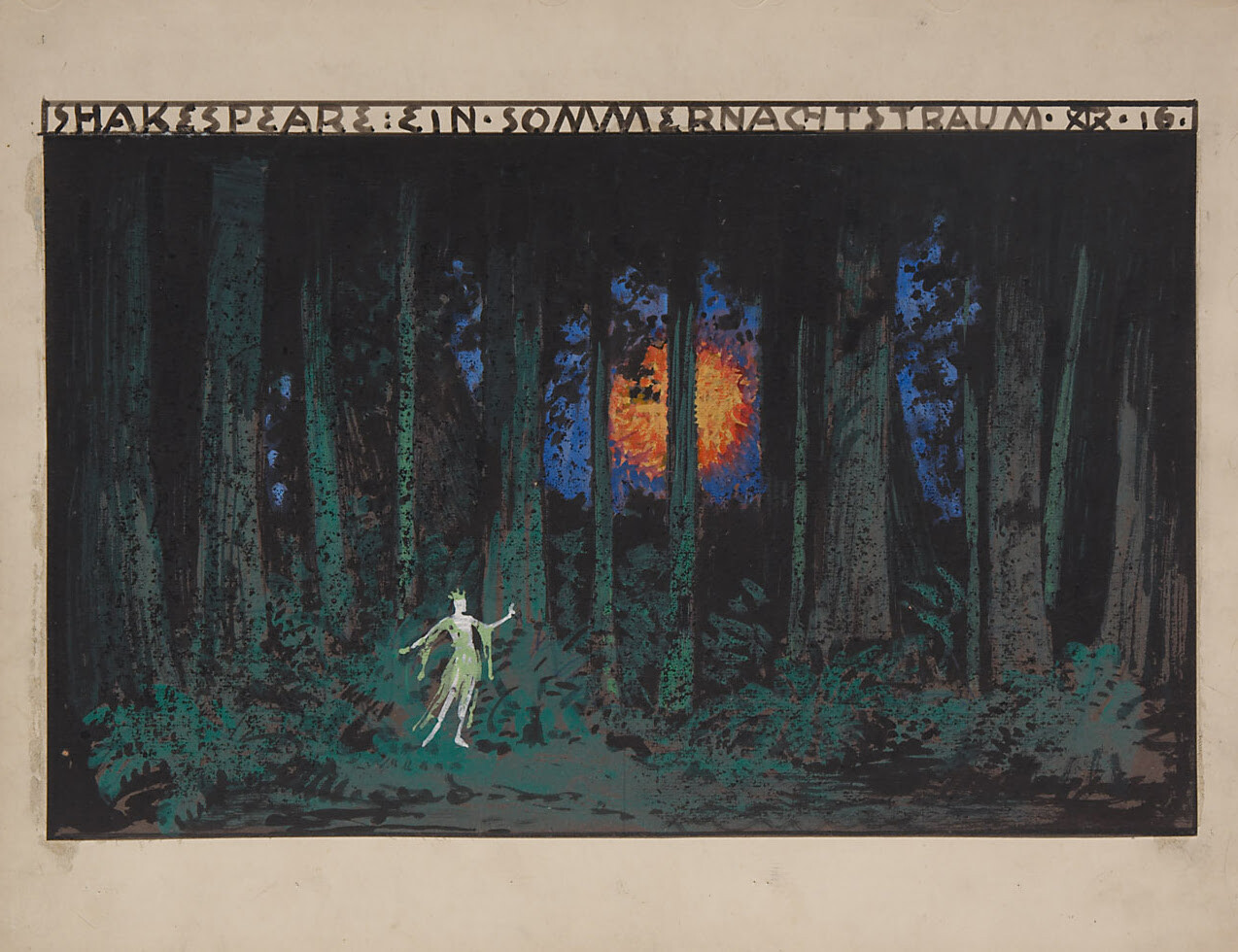
Alfred Roller: Set design for "A Midsummer Night's Dream" by William Shakespeare, 1916, Theatermuseum, Vienna
© KHM-Museumsverband
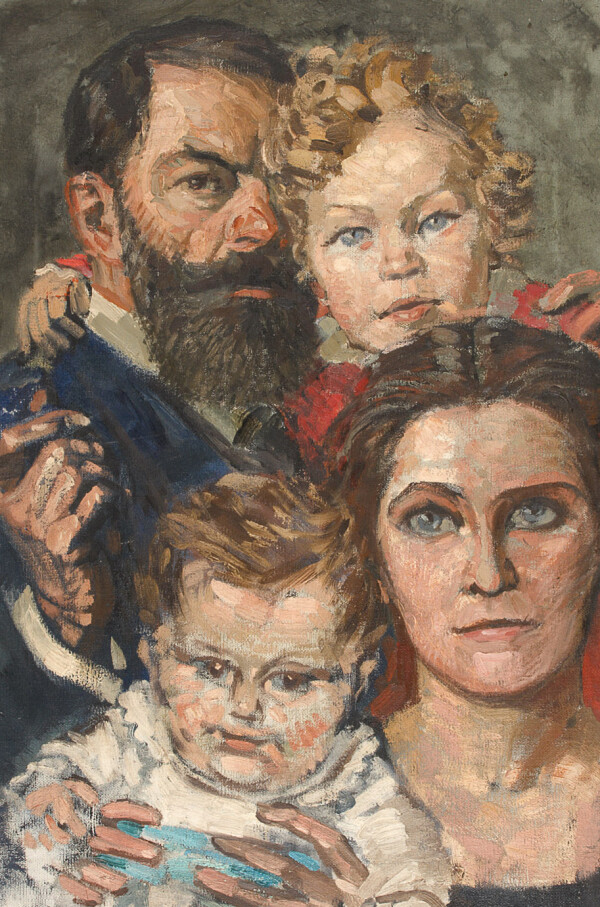
Alfred Roller: Family portrait (his wife Mileva and his sons Dietrich and Ulrich), Theatermuseum, Vienna
© KHM-Museumsverband
In 1905, Alfred Roller left the Secession together with the so-called “Klimt Group.” In 1906 he married his former pupil, the painter Mileva Stoisavlievic, who also joined the loose association of artists around Klimt, while for him it meant that he would continue to move in the same circle of friends. Together with Gustav Klimt, Hugo von Hoffmannsthal, Richard Beer-Hofmann, Arthur Schnitzler, Koloman Moser, and Josef Hoffmann, he attended various cultural events. In 1908 he was a member of the working committee of the “Kunstschau Wien,” in the realization of which his wife Mileva was also involved.
After Gustav Mahler left Vienna in 1907, Roller returned to the School of Arts and Crafts as director in 1909 and introduced a comprehensive educational reform that anticipated the ideas of the Bauhaus. He strengthened the cooperation with trade and industry and expanded the range of subjects taught. In this context, Klimt sent a written request to his professor friend in 1910, asking for his nephew Julius Zimpel to be admitted to the school. The latter was to become a well-known graphic artist under Roller.
Even during his teaching job, Roller continued to work as a freelance stage designer. In addition to designs for the Court Opera and the Burgtheater, he worked on various international commissions for theaters in Berlin, Dresden, and New York. He also taught at the Reinhardt Seminar, which led to a close collaboration with Max Reinhardt. Together with Max Reinhardt and Hugo von Hofmannsthal, he co-founded the Salzburg Festival.
Designs for “Jedermann” in the Context of the Salzburg Festival
Away from the theater, he continued to actively promote the visual arts of modernism. In 1912 he was a co-founder of the Austrian Werkbund. In 1928 he was on the committee of the “Exhibition in Commemoration of Gustav Klimt” at the Secession alongside Julius Tandler, Anton Hanak, Berta Zuckerkandl, and Carl Moll.
After his retirement in 1935, the ailing artist withdrew from the cultural scene of one’s own accord. The 71-year-old Alfred Roller died in June that same year.
Literature and sources
- Theresa Prammer: Heinrich Lefler und Alfred Roller als Bühnenbildner. Ihre Neuerungen und Reformen an der k. k. Hofoper unter Gustav Mahler 1900-1909. Diplomarbeit, Vienna 2011.
- Österreichisches Biographisches Lexikon. Alfred Roller. www.biographien.ac.at/oebl/oebl_R/Roller_Alfred_1864_1935.xml (04/17/2020).
- N. N.: Professor Alfred Roller gestorben, in: Salzburger Chronik, 22.06.1935, S. 10.
- Salzburger Festspiel Archiv. archive.salzburgerfestspiele.at/geschichte/1922 (04/17/2020).
- Wien Geschichte Wiki. Alfred Roller. www.geschichtewiki.wien.gv.at/Alfred_Roller (04/17/2020).
- Vereinigung bildender KünstlerInnen Wiener Secession (Hg.): XCIX. Ausstellung der Vereinigung bildender Künstler Wiener Secession. Klimt-Gedächtnis-Ausstellung, Ausst.-Kat., Secession (Vienna), 27.06.1928–05.08.1928, Vienna 1928.
- Berta Zuckerkandl-Szeps: Roller und Strnad. Die Schöpfer und die Nachahmer, in: Neues Wiener Journal, 13.02.1929, S. 4-5.
- Visitenkarte mit Kuvert von Gustav Klimt mit einer Nachricht an Alfred Roller (presumably circa 1910). AM 47.387 Ro/1-2.
- Manfred Wagner: Alfred Roller in seiner Zeit, Salzburg - Vienna 1996.
- Oskar Pausch: Der Besuch Alfred Rollers bei Adolf Hitler 1934. Ein verschollenes Dokument, in: Österreichische Zeitschrift für Geschichtswissenschaft, Nummer 23 (2012).


